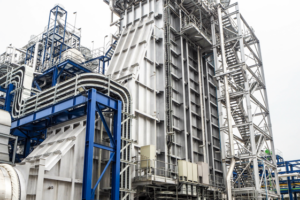Services
Laborelec, part of ENGIE Research & Innovation, offers services to all players in the electricity sector. Electricity producers and grid operators are among our historical customers, but our offer does not end there: we also serve the industry in its broadest sense, as well as communities and the public sector.
Much of our support focuses on the day-to-day operation of our customers’ facilities. Our goals are to protect the value of their investments and improve the performance of their assets. But beyond operations, we also provide upstream assistance for engineering companies, investors and others.
Another of our mission is to drive innovation. Because we firmly believe in the virtuous circle of operational assistance and the upstream R&D which feeds it, we’re confident that our contracted research services provide essential and well-targeted support to customers when they need it.
So, what can we do for you?
Do you have
just two minutes?
Our website is more than just our showcase. It describes who we are, where we come from, and what we do for our different groups of customers. But if you have just two minutes to devote to us, this video is for you. It’s a helicopter view of solutions, our areas of operation, and the expertise and skills we can call upon from our 370 dedicated colleagues.
Direct sun reflection by orbiting mirrors could boost solar farm yields
Yields from large solar power plants around the world could be increased significantly through direct sun reflection (DSR) involving giant…
Luc Goossens, Laborelec’s new Managing Director
Most of us know him from his previous position, as head of ENGIE Research & Innovation's research programmes. But with…
Luc Goossens, nouveau Directeur Général de Laborelec
La plupart d'entre nous le connaissent pour son précédent poste, à la tête des programmes de recherche d'ENGIE Research &…
Luc Goossens, de nieuwe Algemeen Directeur van Laborelec
De meesten van ons kennen hem van zijn vorige functie, aan het roer van de onderzoeksprogramma's van ENGIE Research &…
Reliable power performance measurement on onshore and offshore wind turbines
ENGIE Laborelec recently became accredited for wind turbine power performance measurements according to IEC61400-12-1. The company’s expertise is based on…
Investigating a technique to chemically clean boiler tubes while in operation
Laborelec is investigating a technique to chemically clean boiler tubes in a heat recovery steam generator while still in operation…












